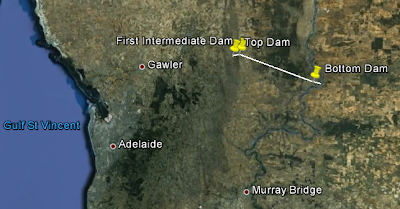Imposing a moderate level of tariffs, even on ALL goods entering a country, will not result in a trade war.
Trade War – a Phony argument
I recently heard a respected (and paid) Australian economic commentator saying that if Donald Trump continues with his “Protectionism” agenda it could bring about a trade war, such as the world had in the 1930s.
Surely we should be beyond such childish commentary on trade policy. The world had quite high levels of tariffs in the 1950s. There was no trade war. They continued in the 1960s. Still no talk of a trade war, with the same applying the 1970s. There is no reason that a moderate and well applied tariff regime should lead to a trade war in the 21st century. It is more likely that not invoking protectionism will lead to an increasing level of discontent.
Tariffs
Since the 1980s tariffs have been progressively coming down, with significant benefits in regard to lower prices being available for many goods. At the same time, jobs in the industrial sector have also declined from two causes. The first is that competitive pressure has made business much more concerned about costs, leading to efficiency improvement, mostly via more automation. Union leaders also realized that pushing for relatively outrageous wage and conditions was impacting on their members’ future prospects, so they led a movement to change their members’ expectations. The second reason is that jobs were exported as the replacement goods were imported. Not every part of this was a bad outcome.
Tariffs can be considered to have been previously introduced to offset an inherent competitive advantage in the exporting nation. This still continues to be the case. Yet now we realize that tariffs are not a one-way street to success. If they are set too high, this can embed business inefficiency, lead to noncompetitive wage rates, and unnecessarily result in paying higher prices for all goods and services.
Contrary to current economic thinking, tariffs are not a “curse word.” Indeed, the clear rationale for tariffs in the 21st century is to attempt to achieve a rational trade-off between lower prices and “full employment.”
A truly rational trade policy would set a moderate level of tariffs for those sectors of the economy that the government of the nation decides it wants to keep and is in danger of losing. Such a policy would not create a trade war, especially since no nation in the post-Trump world will be able to resist its compelling logic.
Not a Trade War – A Healthier World Economy
Who really thinks that a sick West helps the East? We all know that China’s exports are declining. Why is that? It is simply because the EU is not buying as many goods from China. This is because the EU is being run by ideologues who have no idea about the benefits of ensuring that all parts of the European economy are running on full-steam.
I suggest that EU economists, and those elsewhere, like the Australian economic commentator mentioned above, read George Cooper’s book, Fixing Economics (2016), to gain an understanding of the importance of a wide-spread of a nation’s wealth as a means of increasing national prosperity.
Who really can argue that impoverishing farmers in Mexico, via NAFTA, is in the long-term interests of that nation? Is Mexico a happier and more cohesive society after NAFTA? I doubt it. Reforming NAFTA is very much in Mexico’s interests, just as it is in the interests of the workers in the industrial cities of America.
We can also look at Australia as a case in point. Sure, we are still ideologically committed to Free Trade (a world-leader in this phony ideology in fact), yet those who really understand the economy, like the former Reserve Bank governor, knew that the $A had to fall in order to improve Australia’s competitiveness after the resources boom. This much vaunted period of prosperity was actually disastrous for Australia manufacturing industry, with much viable manufacturing being lost (probably forever). “Fortunately” the Australian terms of trade took a catastrophic fall, thus saving us (as far as can be done) from our own folly. Tariffs were an impossible concept for us, but a falling $A did not offend the ideologues running economic policy here.
Maintain cohesion in the nation should be a government’s #1 aim in peace time. Policies that achieve this are in everyone’s long-term interests, even if the “winners” have to take 10% off their spoils from economic success.
Go Donald Trump!



